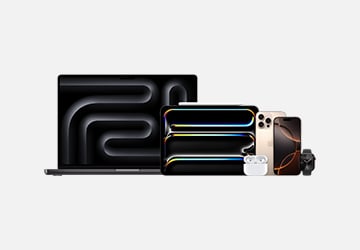Written by Eoin Johnston, Head of Solutions Architecture at Presidio
When people talk about the “fast-pace of IT” the emphasis is usually placed on the technology. What’s more interesting, however, is what technology means in the context of how we live and work.
Think about it in terms of career evolution – when I started out in my career, Storage Consultants had to deeply understand the mechanics of storage subsystems; practices such as “Short-Stroking” hard drives to eke the last drop of performance are now defunct concepts thanks to flash technology! The evolution of software defined infrastructure allows architects to focus further and further up the chain, which is why I believe the roles of Infrastructure Architect and Software Architect will begin to converge in the not too distant future.
Ultimately what this has taught me is if you’re too comfortable, you’re at risk of coasting – operating on the edge is where the gains are made and where it gets exciting. This is why I love talking to customers about the possibilities that software defined technologies such as VMware VSAN has brought.
Before you get started – three questions to answer
As excited as I am about the potential of HCI (and there is a huge amount to be excited about), I recommend starting any infrastructure refresh conversation in 2021 with three questions:
1. Is your environment better suited to traditional infrastructure or hyperconverged?
Answering this question helps make sure you’re investing for the right reasons. If you’re looking to simplify your infrastructure, or your organisation wants to move towards automation, HCI’s software designed focus allows you to take advantage of the abstracted control layer.
Automated provisioning through storage profiles is available with VSAN by default, and has native API integrations with platforms such as VMware Cloud Foundation (VCF). Traditional Infrastructure still has a place however, specifically for outlying use cases where storage & compute resources are not expected to scale in parallel. In my experience the 80:20 rule prevails here once again – the vast majority of customers can take advantage of HCI from the outset.
2. Are you considering cloud or on-premise?
I have noticed a marked change in attitude towards cloud migrations since the beginning of the pandemic. Many organisations which were office-based are now moving to a work from home model, and even closing offices and associated datacentre/comms rooms along with them.
This has meant many customers are looking to a lift and shift to the cloud. This has been done before and there were some lessons to be learned the first time around. I advise my customers to reduce friction wherever possible, replace servers with SaaS or PaaS Services, and consider VMware’s native cloud integration offerings such as VMware Cloud on AWS and Azure VMware solutions where speed and simplicity is paramount.
3. All flash vs spinning disks?
This is close to my heart and it surprises me that people still look for spinning disks and arrays for primary data in 2021. The industry has reached and passed the point where flash storage has become more cost effective, especially when data reduction techniques are utilised.
You may think that all flash is overkill for your dataset, but the reality is that flash delivers greater reliability and significantly lower latency than traditional spinning disk for all workloads. Also consider that most storage vendors will be selling you a support contract; these vendors do not want to be stocking spinning disk in 5 or 7 years’ time, so often offer better value support contracts on flash disks than spinning disk.
Large, slow spinning drives still do have a place in Archive and Backup appliances, but not for your organisations primary data. Think of it this way – would you would purchase a laptop in 2021 with a spinning drive? Why would primary data be any different?
Imagine the possibilities
In the same way that many of our careers involve job roles that didn’t exist when we were at school, the way that businesses operate has taken on a whole new shape. One of my favourite Presidio examples is where we helped a highly regulated organisation transform their environment from large, complex, siloed and spread across six or seven racks to a streamlined, fixed, modular design on a single platform with a single pane of glass for management.
Alongside the back-end efficiencies that this VMware-based solution had to offer – the customer gained tremendous benefits at the front end too. Employees were able to switch from being location-constrained to entirely mobile – what began with fully biometric machines that were fixed to desks with no workload mobility became an environment where employees can walk into meetings with a portable secure device.
Alongside singing about the level of mobility, the organisation has confidence that it is adhering to strict security policies plus reducing the cost, risk and waste that was involved in printing out paper notes.
Next generation
So, what’s next? While traditional Virtual machine workloads have delivered flexibility and availability to all sizes of infrastructure, they were not designed with application level automation and orchestration in mind.
Aspects of virtual machine-based infrastructure can absolutely be automated, but the cloud native applications developed in the near future from container and serverless technology will deliver ubiquitous automation and orchestration by design. Even hardware vendors such as Dell EMC are preparing to deliver infrastructure which will cater for the predicted swing of today’s traditional applications (90% of portfolio today) to cloud native applications (70-90%) in as little as 3 years.
The beauty with VMware is its modular approach means however you’re interested in developing your infrastructure, or whatever the next generation of your workforce demand, you don’t have to throw away what you’ve already invested in. vSphere 7 brings the best of all worlds – traditional VM based infrastructure, containers and Kubernetes all on the same platform.
Give your developers what they need; a common platform regardless of where it runs.







